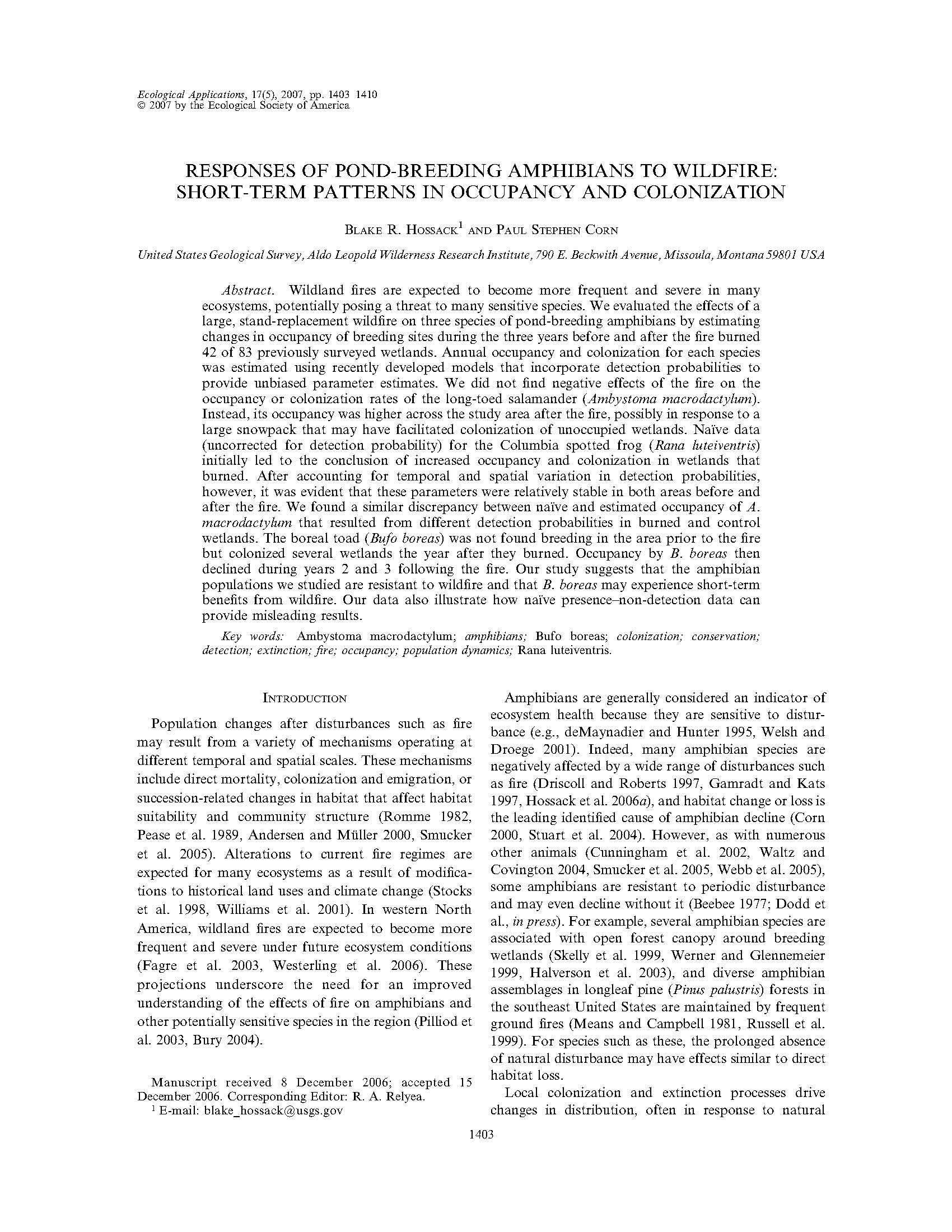Responses of pond-breeding amphibians to wildfire: short-term patterns in occupancy and colonization
http://www.fs.fed.us/rm/pubs_other/rmrs_2007_hossack_b001.pdf
Abstract/Summary
Wildland fires are expected to become more frequent and severe in many ecosystems, potentially posing a threat to many sensitive species. We evaluated the effects of a large, stand-replacement wildfire on three species of pond-breeding amphibians by estimating changes in occupancy of breeding sites during the three years before and after the fire burned 42 of 83 previously surveyed wetlands. Annual occupancy and colonization for each species was estimated using recently developed models that incorporate detection probabilities to provide unbiased parameter estimates. We did not find negative effects of the fire on the occupancy or colonization rates of the long-toed salamander (Ambystoma macrodactylum). Instead, its occupancy was higher across the study area after the fire, possibly in response to a large snowpack that may have facilitated colonization of unoccupied wetlands. Naive data (uncorrected for detection probability) for the Columbia spotted frog (Rana luteiventris) initially led to the conclusion of increased occupancy and colonization in wetlands that burned. After accounting for temporal and spatial variation in detection probabilities, however, it was evident that these parameters were relatively stable in both areas before and after the fire. We found a similar discrepancy between naive and estimated occupancy of A. macrodactylum that resulted from different detection probabilities in burned and control wetlands. The boreal toad (Bufo boreas) was not found breeding in the area prior to the fire but colonized several wetlands the year after they burned. Occupancy by B. boreas then declined during years 2 and 3 following the fire. Our study suggests that the amphibian populations we studied are resistant to wildfire and that B. boreas may experience short-term benefits from wildfire. Our data also illustrate how naive presence–non-detection data can provide misleading results.
Publication details
| Published Date: | 2007 |
| Outlet/Publisher: | Ecological Applications 17: 1403–1410 |
| Media Format: |
ARMI Organizational Units:
Rocky Mountains, Northern - BiologyTopics:
DroughtFire
Management
Monitoring and Population Ecology
Stressors
Place Names:
MontanaKeywords:
amphibiansARMI
climate
colonization
distribution
ecology
extinction
fire
habitat
monitoring
occupancy
population
stressors
trends

